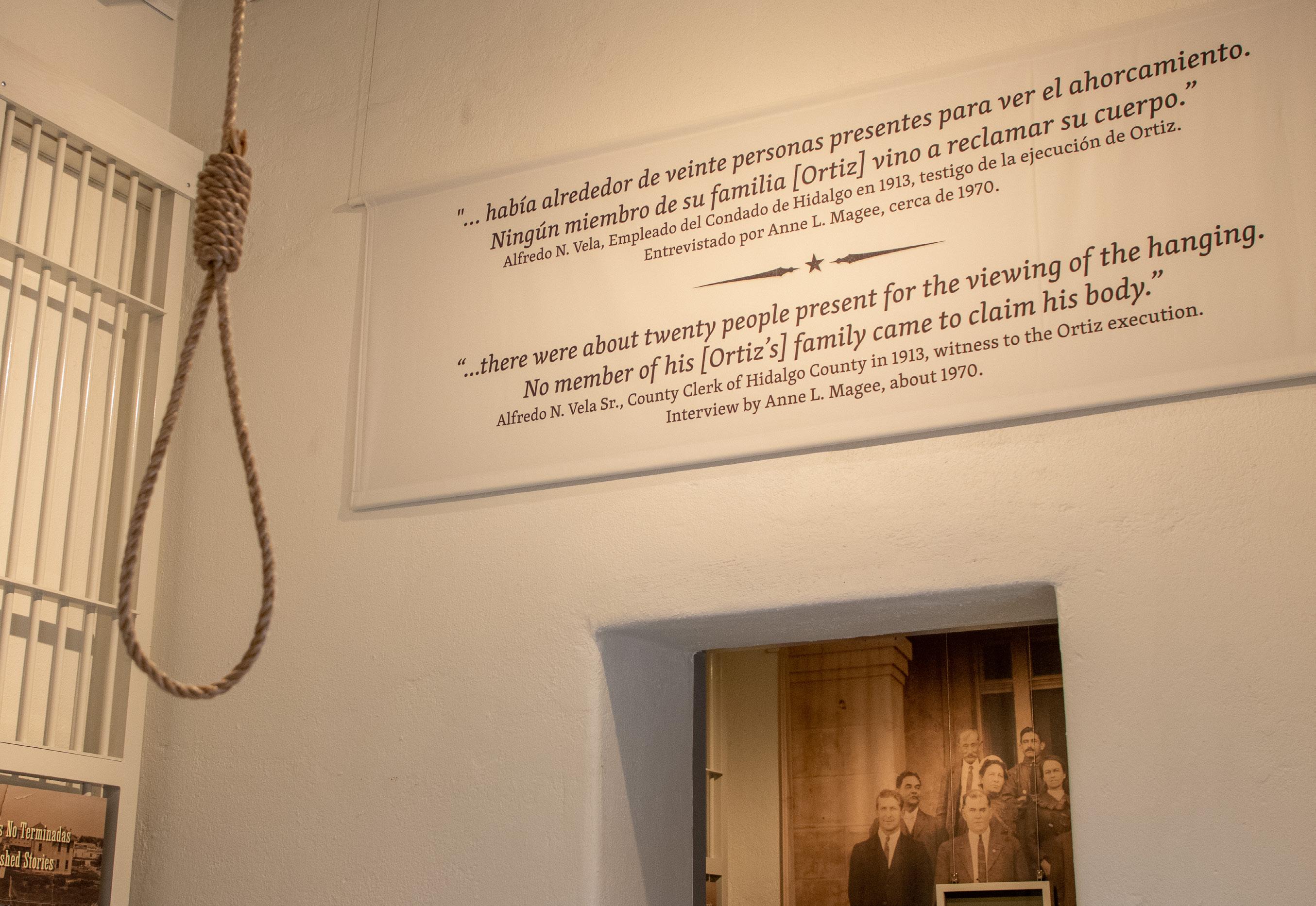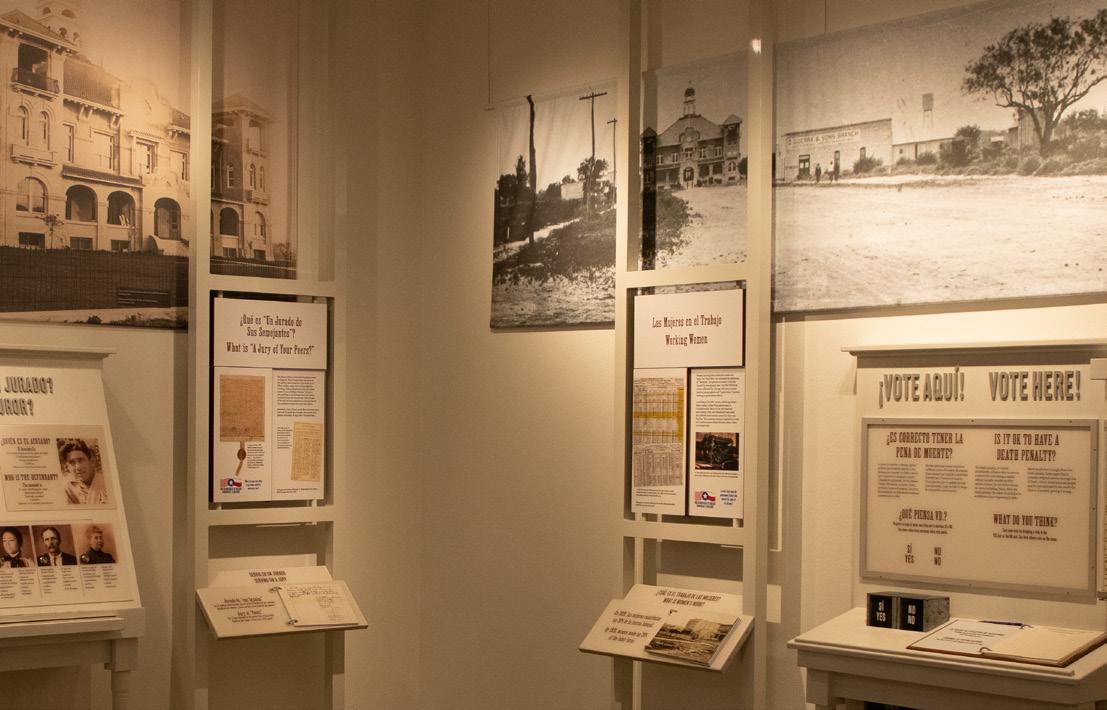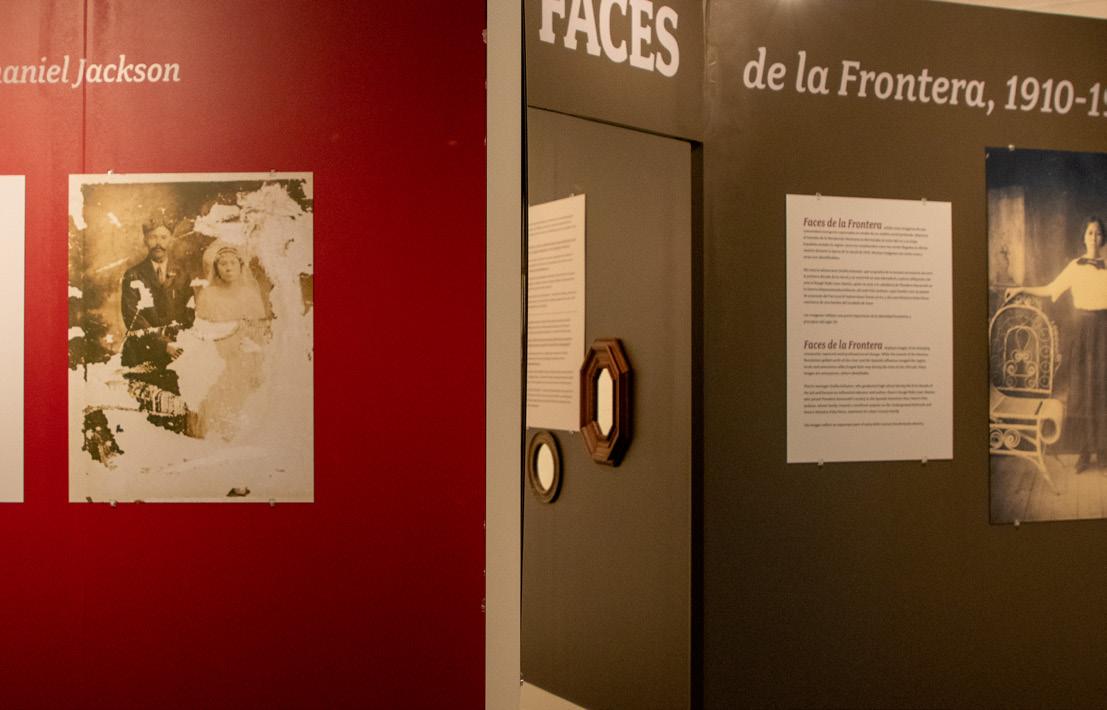
4 minute read
1910 Jail reopens at MOSTHistory

1910 JAIL
REOPENS AT MOSTHISTORY
by Tom Fort, Senior Historian
The death row is empty. The last cell door stands open.
Century-old brick walls peer from under restored stucco. For almost 10 years, time stood still in the old Hidalgo County Jail in Edinburg, where a hanging once took place and spirits from the past seemed to hover. But now the jail’s long sleep is about to end! In 2021, fully restored and with all-new exhibits, this 110-year-old treasure is coming back to life again!
Closed to the public since 2012, the jail had preservation issues to be resolved. An all-out program to save the jail and return it to its former glory began in 2005. MOSTHistory asked the Texas Historical Commission about architectural firms with special experience in historic buildings. From the THC list the museum contracted with Volz & Associates, an Austin firm familiar with old masonry structures. There was good reason for this. The jail’s solid brick walls had footings planted deep in downtown Edinburg’s high-water table, causing decades of deterioration from “rising damp.” A leaking roof, weathered wooden windows and other problems also needed attention. Chris Hutson of V&A took on the project in 2005, made site inspection visits with engineer Pat Sparks, and in 2006, produced the master plan which has guided the museum through the entire preservation process.




The master plan included a projected total expense of nearly $2 million to stabilize, repair and renovate the Jail. No matter; MOSTHistory’s board members and staff, with the support of a legion of FRIENDS and other donors, met the challenge. After all, this was the museum’s original home, and one of the most historical buildings in Edinburg and Hidalgo County! It opened in 1910, along with a new courthouse in the also-new town of Chapin, which had dethroned Hidalgo (on the Rio Grande) as the county seat. The jail rose on the courthouse square’s north side, within an easy walk–for prisoners under guard—to the courthouse. Inside the jail were an office, a kitchen and a metal stairway on which every new prisoner climbed and clanked, escorted by a shotguntoting guard. On the second floor was the big cell block room and three small rooms, including the hanging room with its built-in trap door. These three cells—the last stop for convicted capital offenders—were the “death row.”
Outgrown and replaced in 1921, the old jail served as a community center, city hall and fire station, and finally opened as the museum in 1970. More decades of heady growth followed for MOSTHistory (known originally as the Hidalgo County Historical Museum). By the 2010s, with other major capital projects completed, it was time to complete the jail preservation. Roof repairs had been done per the master plan in 2007 and 2008, as the museum launched the “Save Our Jail: A Landmark Project” capital campaign to fund the project before the bigger part of the effort was begun. In 2012 the jail was closed to visitors due to falling wall plaster and unhealthy conditions inside. With the money raised, the museum was ready and contracted with D. Wilson Construction (DWC) to carry out the work. It began in 2017 with abatement and removal of the HVAC system, followed by interior demolition. A major feat was installing a moisture barrier in the solid-brick walls, to prevent ground water from rising into them. A new ground-floor slab was put in, also with a moisture barrier under it. The work continued through 2018, with re-built windows and doorways, new HVAC and wiring, and finally an all-new security system. DWC proudly delivered the restored jail to MOSTHistory in January 2019.
Meanwhile, new exhibits for the jail also were coming. Several years of discussions among staff members culminated in 2018 with the hiring of a Texas-based exhibit firm, Pony Allen Studios (PAS), which has done numerous museum exhibit projects. Building on the museum’s jail-history files and image collection (assembled for the Jail Centennial in 2010), the Austin-based PAS began the concept and design process. Now, some two years later, the exhibits have been installed. Visitors will soon enjoy “The 1910 Jail: An Arresting Artifact and Its Story” by walking once again through the jail itself, learning about its history through original artifacts and period images. The words of persons who lived and worked in the jail can be read–and sometimes heard. The jail’s role in the community around it–including the justice system—will be explored through interactive and hands-on exhibits. Upstairs in the Cell Block Gallery, changing exhibits will be on display. “Faces de la Frontera” will be the first of these. Thus, some 15 years after it began, the museum’s long effort to “Save Our Jail” as a unique historical resource for learning and reflection has been achieved. MOSTHistory invites you to come and experience the 1910 Jail–and maybe hear whispers from the past!










